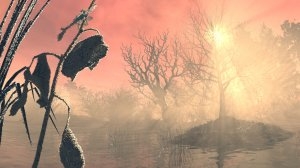
 BY ELIZABETH FIEND LIVING EDITOR People invariably get depressed in the winter. They complain about the weather. They huddle in the dark, alone and SAD with Seasonal Affective Disorder, or just plain bad moods. They sleep too much, eat too much. Productivity levels go down, anxiety sets in. In Northern Europe, Canada and other cold climates, people sit on park benches, eat and drink at outdoor cafes, ice skate and cross- country ski, soaking in the sun — even if its rays are dimmer, present for shorter periods and there’s a chill in the air. Americans? We hide indoors and bitch.
BY ELIZABETH FIEND LIVING EDITOR People invariably get depressed in the winter. They complain about the weather. They huddle in the dark, alone and SAD with Seasonal Affective Disorder, or just plain bad moods. They sleep too much, eat too much. Productivity levels go down, anxiety sets in. In Northern Europe, Canada and other cold climates, people sit on park benches, eat and drink at outdoor cafes, ice skate and cross- country ski, soaking in the sun — even if its rays are dimmer, present for shorter periods and there’s a chill in the air. Americans? We hide indoors and bitch.
PROTIP: Get fresh air and sunshine, even in the winter.
I’m outside on my bike for my half-hour commute to work each morning. And I go outside during my lunch hour each day, even if it’s just bundling up and walking to another building with a lunch room. It’s not a drag, it’s rejuvenating and exhilarating. Change your mindset so you think so, too. You’ll feel better for it physically and mentally.
When I went outside for lunch a few days ago, I spied a hawk lazily sunning himself on a tree branch. Since it’s winter, even though it was noon, the sun was low to the horizon and hidden behind an office building. Only its filtered rays hit the hawk, highlighting its brown head feathers turning then to a glowing, golden color. Such a magnificent beast! So huge, so noble so confident, so in charge. It filled my heart with joy – so not kidding! Really, I felt such happiness. I just gawked at that hawk until my neck started to hurt from looking up for so long.
huge, so noble so confident, so in charge. It filled my heart with joy – so not kidding! Really, I felt such happiness. I just gawked at that hawk until my neck started to hurt from looking up for so long.
But before I turned away, I noticed a broken tree limb about 6 feet away from the hawk. Poking out from the hollow was the wisp of a squirrel’s tail! Ha, ha, the squirrel was hiding from the hawk. Even in Wild West Philly, nature plays it out. What a wonderful scene to behold, and it all happened before my eyes because I had made the effort to go outdoors. [Note to any squirrels reading Phawker: When hiding from a hawk, tuck in your tail!]
It was a stand-off that day: no lunch was had; no one became lunch.
Such is the yin and yang of life itself; the seasonal shifts creating changes even inside our own bodies coming round full cycle every 365 days and 365 nights. Except that this year has 366 days and nights, and the extra one is in the coldest part if winter.
Our bodies, emotions, and health are balanced (or put out of balance) by hormones that respond to the call of nature’s cycles. We are , after all, still animals. These hormones are yin and yang in our bodies, regulating us, keeping our systems in harmony.
Melatonin, the dark yang, is a sleep-related hormone. Too much is linked to depression. Melatonin production increases during long winter nights. Uh-oh.
The hormone serotonin, the bright yin, brings with it a level of happiness. It’s believed that sunlight can increase production of serotonin. And winter has short days, less sunshine.
 Yeah, it all seems like a set up. And the cards are stacked against us.
Yeah, it all seems like a set up. And the cards are stacked against us.
In the winter when the days are shorter and the nights are longer, it’s easy for our natural cycles to get out of whack. Bring on the overeating, the mild depression, as well as the more intense Seasonal Affective Disorder.
The answer: Let the sun shine!
But we’ve become afraid of the sun. It’s been vilified, and rightly so, since we’ve f-ed up the atmosphere and wrecked the ozone layer, making the sun’s rays hit us with much more intensity than they used to (or should). Skin cancer, a real killer, caused by exposure to the sun’s UV rays, has forced us to rethink our outdoor time. But a little time, each and every day is OK, even better than OK.
Being outside at least 30 minutes per day during daylight hours helps to regulate your circadian rhythm, or biological clock. Our internal clock is controlled by the pineal and hypothalamus glands, which regulate the release of hormones like melatonin, telling you when to wake and when to sleep, among other things. If your internal clock is messed up, you can become depressed, lethargic and have the other symptoms of SAD. All this in response to information the glands receive from photoreceptors in our eye’s retinas.
See where I’m going? The sun. You need to be exposed to it. And how do you do that? You have to go outside.
Even in the winter, or maybe especially in the winter, spend some time outdoors each and every day. Go on, squeeze in a little outside-time into your normal schedule. Make it a habit.
Sun glasses: Don’t wear them in the winter (unless you have to when driving, skiing etc.). I know you’re cool, but your eyeballs need to be exposed straight-out to the sun in the winter, not hidden behind glass or plastic, to gain the healthy benefits of Sol.
Again, we’re talking use-some-sense. Moderate exposure to the sun, 30 minutes at a time.
Exercising, indoors or out, is another way to beat the winter blues.
Sources and For More Information:
Circadian rhythm:
http://dictionary.reference.com/browse/Circadian%20rhythm%20
Seasonal Affective Disorder:
http://www.mayoclinic.com/health/seasonal-affective-disorder/DS00195
ABOUT THIS COLUMN: At no time in recorded history have we possessed so much knowledge about health and nutrition, or had such vast and effective means for disseminating that knowledge. Yet for all that, we essentially live in a high-tech Dark Age, with most of the global population ignorant or confused about the basic facts of their own biology. How did this happen? Well, that alone is a whole six-part miniseries, and this ain’t the Discovery Channel. Suffice to say that the bottom line of many a multi-national corporation depends on that ignorance, and vast sums of money are expended to keep us fat, dumb and happy. But mostly fat. There was a time when newspapers saw it as their duty to truth squad the debates over health, science and the environment, but that’s a luxury most papers can no longer afford — not when there are gossip columnists to be hired! To help remedy this violation of the public’s right to know, Phawker publishes the JUNK SCIENCE column by Elizabeth Fiend, beloved host of the BiG TeA PaRtY. Every week, Miss Fiend connects the dots to reveal a constellation of scientific facts that have been hiding in plain sight, scattered across the cold, vast reaches of the Internet. With a background in punk rock and underground comics, and a long career as a library researcher, Miss Fiend doesn’t pretend to be a scientist or an expert. She does, however, know how scientific facts become diluted by corporate-sponsored non-facts, and every week she separates the smoke from the mirrors. Why? Because she loves you.
